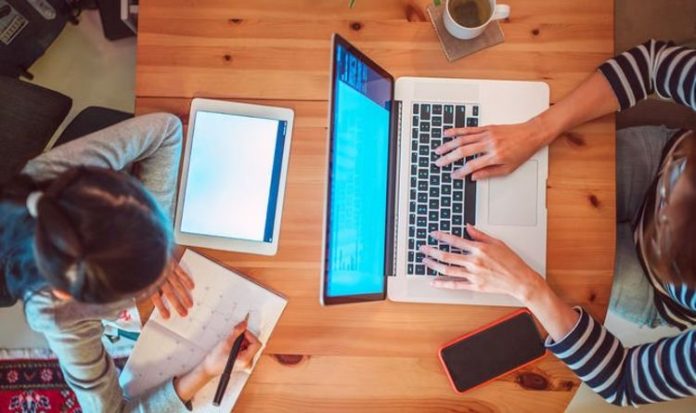As millions of us stay home to work, study and socialise in a bid to prevent the spread of the coronavirus, we’ve become more reliant on our broadband connection than ever before. If you’re fortunate enough to live somewhere supplied with reliable fibre broadband and have the means to sign-up for a costly 18-month contract, then that isn’t too much of a problem. However, millions of people without access to internet connections have been unable to connect with teams at the office, search for new jobs, attend virtual lessons, and more.
In response, the UK Government as well as a number of companies have launched initiatives to bring free broadband connections to those in need. But worryingly, new research from comparison site Compare Fibre suggests that millions might be unaware of the free connection they’re eligible to claim.
According to the new research, some 57.4 percent of lower-income households have not taken up the offers – or are unaware that help is even available. That equates to some 7.1 million people.
In a bid to try to raise awareness, Compare Fibre has announced plans to include details of all the major broadband schemes available to lower-income households. These include free Wi-Fi Vouchers, while are available for the five million or so BT public hotspots. You don’t need to be a BT customer to grab one of these vouchers, which lets you connect to the speedy Wi-Fi hotspot to join video calls with teachers or employers.
If you’re not living near one of these hotspots, Vodafone is offering some 350,000 students free SIM cards with a 30GB allowance of mobile data. That allowance will disappear pretty quickly if you’re making or answering video calls, but it should be plenty to download classroom materials, upload work for marking, and use collaborative tools like Google Docs, or Microsoft’s Office 365 suite, which is available in your browser.
MORE LIKE THIS
Virgin Media price rise: Customers reveal simple way to beat the hike
The Government has also launched a Get Help With Tech scheme that offers increased mobile data from EE, O2, Sky Mobile, SMARTY, Tesco Mobile, Three and Virgin Mobile, as well as free 4G routers to use these mobile data connections to supply a Wi-Fi network inside your home to connect smartphones, tablets, Chromebooks, desktop PCs, or laptops for work or schooling.
Head to Compare Fibre and enter your postcode – as if you were trying to compare the price and speed of providers in your area – and you’ll also be presented with the free broadband schemes available to you.
Nathan Hill-Haimes, the co-founder of comparison portal Compare Fibre, said: “There is support on offer, but we need to go further. It is so sad that lower-income families are choosing between feeding their families and paying broadband bills. Before homeschooling broadband was as a luxury, but now it’s a necessity. Access to learning is a human right; we have to help more.
“The importance that an Internet connection plays in children’s education is not diminished, just because a lockdown ends. If anything, it becomes more important to those left behind that now need to catch up. It is excellent that there is free broadband on offer. Our broader concern is what happens once the pandemic is over. That’s why we’re calling for a long-term solution in the form of means-tested broadband.”
For its research into the number of people missing out on the free broadband schemes available to help during the pandemic, Compare Fibre polled 1,000 low-income (families earning less than 60 percent of the national median pay) households during January 2021. Of those surveyed, some 574 had not taken up a free broadband offer and were unsure how to. The Department Of Work and Pensions defines “low pay” as any family earning less than 60 percent of the national median pay. So, on that basis, there are more than 13 million people in the UK living in low-income households. 57.4 percent of 13 million people is 7.1 million people.




